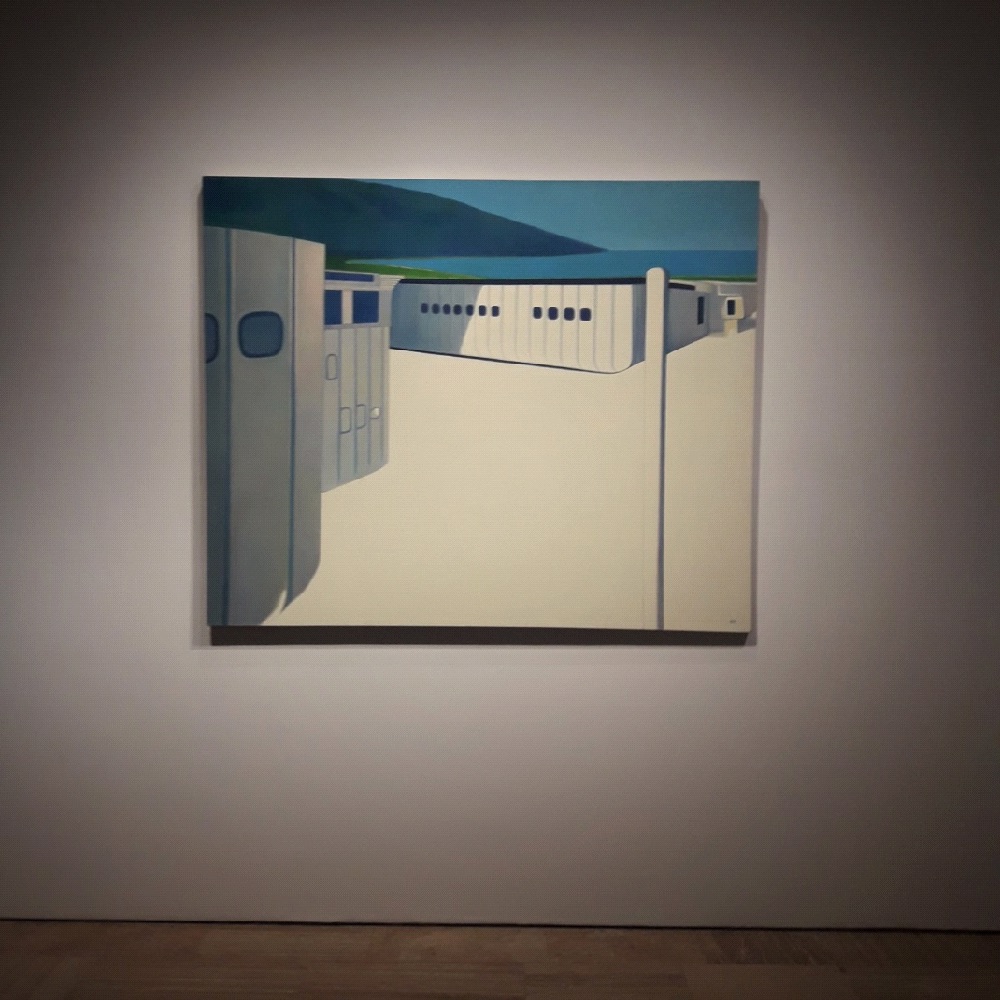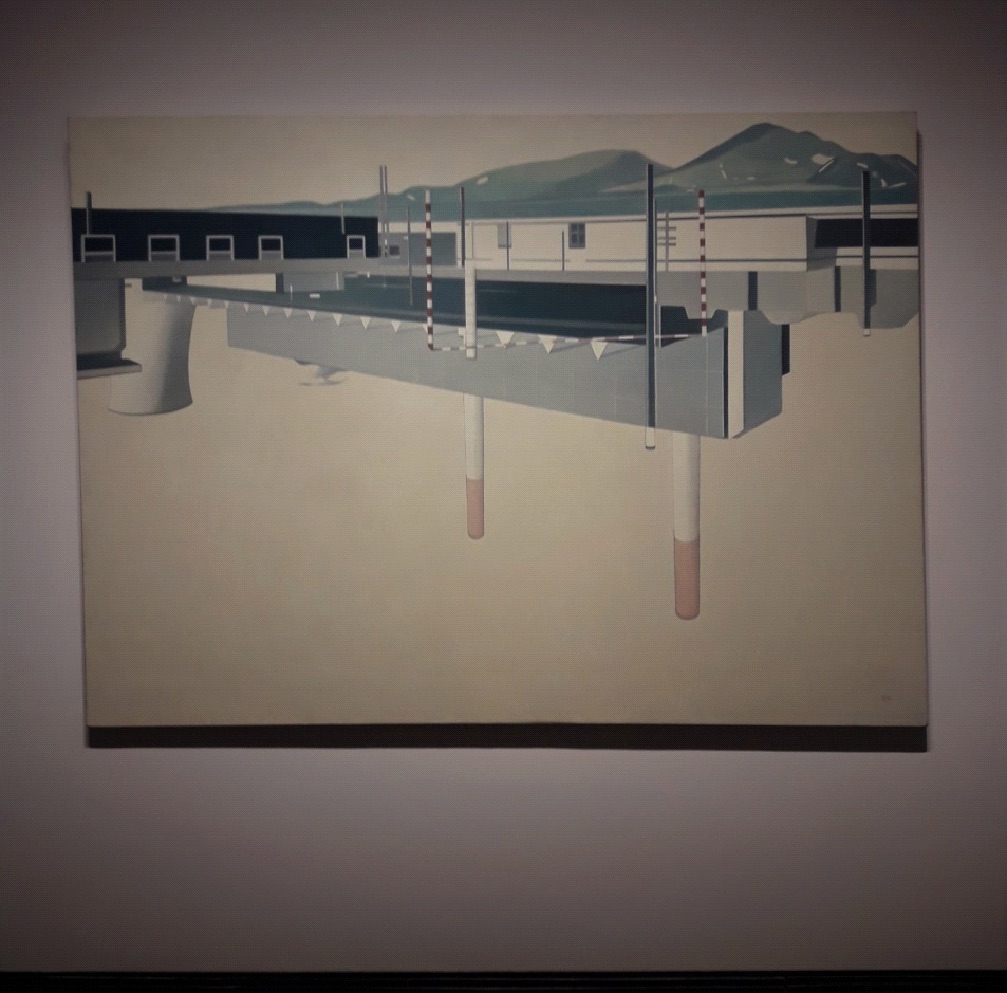History of Art Criticism
Lecturer: Vardan Azatyan
Student: Bella Hakobjanyan
Critical Review of Karen Ohanyan’s Personal Exhibition
Title: “Karen Ohanyan: Sevan”
Exhibition Curator: Armen Yesayants
Cafesjian Center for the Arts
What comes before your eyes when you read the title? The things I witnessed at the gallery surprised me a little, but then attracted and moved me. This is Sevan just as it is, and not in the way we would like to imagine or perceive it; it tells about itself and introduces to the viewer. After spending a while in the main hall, I started to experience some exciting sensations: tranquility and harmony, anxiety and alarm at the same time. When I entered the hall, my attention was obviously captured by the arrangement of canvases. Three works were exhibited on three separate walls and each of them had its own individual lighting. The lighting in its turn generalizes a holistic perception of the pictures. However, it isn’t that easy to instantly perceive these works of Karen Ohanyan. They make us strain our brain, and start thinking. Communication with the works is quite a long and meditative process. It seems, that these abandoned, mystical and quiet spaces are existing on the surface of another level. In the given case both the environment and the special lighting, as well as the restraint of the canvases, give rise to many questions. From the pictorial point of view, in the two bigger pictures out of three on show, there are depicted buildings, in the way comparable with nature, reminding industrial structures; the third one reflects connection between architecture and nature. Nevertheless, they are able to convey a feeling of discomfort to the viewer through a perspective coming out of the picture. In this case, when the lines of perspective don’t cross in the depth, but on the contrary trying to reach the viewer, it may surprisingly seem as a barrier - barrier for your eyes while you look at the picture; however, there’s no need to resist it. Besides, the pictures are so big in size, that you are unable to comprehend them with just one glance. If you are patient enough the pictures will speak themselves influencing the viewer, telling the way how to perceive them. It’s interesting, that Ohanyan doesn’t present the features of the lake in his works; instead of that he gives a rise to such issues, which might be a reason for the anxiety for the lake itself, or even for the nature. Such issues that need to be approached more seriously. From the point of view of color perception, the artist does not use brightly expressed colors.The strokes are mostly smooth, superimposed in thin layers and by large parts. Calm, monotonous, pastel colors are used, which are accentuated in some places. In addition, he almost doesn’t pay much attention to color perspective, so there is no definiteness of plan. The pictures seem to be interconnected at the same level of one and the same surface, and what is more notable - they are inverted (particularly in Fig. 2). While contacting such works, you mentally try to correct everything, even make attempt to change the viewing angle, in order to make the pictures more accessible.But it is not right way, because the work may lose its true content and message. The works should be perceived as they really are. If to quietly contemplate the canvas, the work will begin to speak about itself on its own. You may notice the dominance of industrial buildings in their relation to nature, especially from the point of view of their position in the picture. However, the question is a little bit superficial. To what extent is it actually true? Where is the limit of this dominance? I think the works are diachronic, and they can transform and bring up such questions that may be subject for discussion at this or that time: issues which relate to production, environment and social problems connected with their relationship with nature. The questions, which unfortunately, have been very delicate and painful so far. When we are tete-a-tete with them, they give as an opportunity to reflect about these issues and, finally, understand what is more important to us. Besides, thinking about nature and about its being abandoned, we try to figure out why and for which reasons the humanity alienates itself from it. All these issues are reflected on the canvases of Karen Ohanyan, moreover, to make them more tangible and to attract our attention, he deprives his pictures of people’s presence. It clearly shows what exactly (industrial buildings) caused the alienation of people from nature. Undoubtedly, the result of that won’t be good. Nature is a living organism that needs attention and care. In this respect, the artist's works are very significant nowadays.So, I left the hall now being fully acquainted with Sevan ...in this case, with the Sevan as the artist sees it.
Translated by George Papayan



